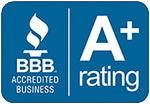Metal Buildings Offer Design Benefits and Cost-Effectiveness
Today’s economic situation often results in an inconsistency on one hand, most facility manager’s capital budgets are decreasing. Same time, alliances, unions, and the growing need, in school districts and health care services especially, to service ever-growing populations mean facility managers have to do more with less in terms of both space and money.
One key that’s also growing in popularity is the “metal building”.
30 years ago Image is misleading, say experts, largely as today’s metal buildings benefit from technology and design advances not possible.
Metal building systems are now recognized as some of the most cost effective and maintainable building types available. There’s marvelous potential to increase energy effectiveness and save money on both new and existing buildings.
Saving energy and saving money which any building owner should appreciate, feel secure with metal buildings.
Choosing Metal
A metal building can be designed, projected and build faster than conventional construction because of the method if construction.
When compared to conventional construction methods metal buildings have fewer components. Fabrication and construction eras are shorter.
Colder climate is another benefit, is that metal buildings can be enclosed as soon as the bolt-together structure and ties are in place. That means that workers can continue working on interior projects even if the building isn’t complete. Today’s metal building systems have the design flexibility to match interior space requirements.Designs might require column placement every number of yards, now we can build work bays, practice fields vast spaces, really without the interruption of columns.
Sustainability Benefits of Metal Buildings
It is commonly known that metal roofs often outperform other roofing types in terms of durability. But sustainability can be a hard characteristic to count, and facility managers often have to decide which maintainable “qualities” have the highest return for their organizations.
Architects and designers asking questions in more than a verbal format: Does a given sustainability measure reduces material consumption? Improve building durability? All two?
With metal buildings, careful design can yield sustainability benefits. On the conservative end of the scale, metal roofing will last 20 to 30 years.
Everything in the building can be recycled. Consistency during fabrication results in a radical decrease of row rates, mentioning an about 2 percent row rate for metal buildings.
Design Flexibility
Metal building systems can be made-to-order to an organization’s needs. They’re also faster to fabricate, and for owners in northern climates, sometimes that speed can affect operational willingness of the structure. They are also suitable for any location.
We work with plaster buildings, but it’s hard to get a good color match in plaster when doing repairs because of the sun disappearing we have. But with a metal building that’s rarely the case, because we just don’t see any color fading.
So what does it take to get a custom engineered metal building? It’s a direct process.
The walls, floor panels and roof built in a factory will require drawings and layouts for building code approval, just like any other re-manufactured structural component. Some manufacturers can offer a “turn-key” solution to builders.
What Does It Cost?
Although designers and metal building experts are reluctant to cost benefits given the countless variables, they are willing to say that a properly designed, built and insulated metal building will be less expensive than a conventional building. Much of that money comes from less planning and building costs.


